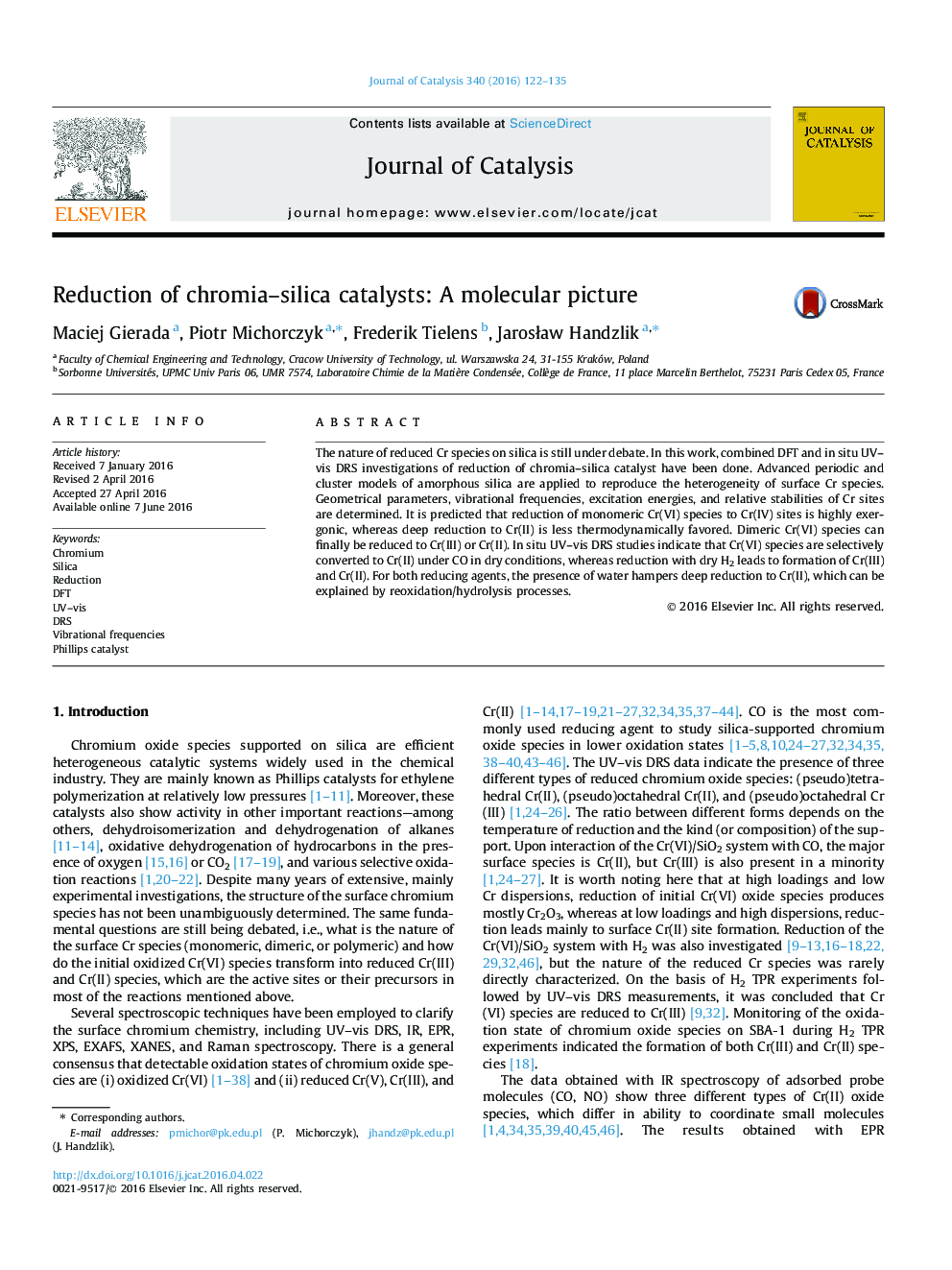| Article ID | Journal | Published Year | Pages | File Type |
|---|---|---|---|---|
| 60514 | Journal of Catalysis | 2016 | 14 Pages |
•Advanced models reproducing the heterogeneity of Cr sites on silica are developed.•A variety of dimeric surface Cr(VI) species and their reduced analogues are modeled.•Dimeric Cr(VI) species are predicted to be less stable than monomeric Cr(VI) species.•Assignments of reported Raman data for reduced chromia–silica catalysts are proposed.•The oxidation states of Cr species reduced with CO/H2 are monitored by in situ UV–vis DRS.
The nature of reduced Cr species on silica is still under debate. In this work, combined DFT and in situ UV–vis DRS investigations of reduction of chromia–silica catalyst have been done. Advanced periodic and cluster models of amorphous silica are applied to reproduce the heterogeneity of surface Cr species. Geometrical parameters, vibrational frequencies, excitation energies, and relative stabilities of Cr sites are determined. It is predicted that reduction of monomeric Cr(VI) species to Cr(IV) sites is highly exergonic, whereas deep reduction to Cr(II) is less thermodynamically favored. Dimeric Cr(VI) species can finally be reduced to Cr(III) or Cr(II). In situ UV–vis DRS studies indicate that Cr(VI) species are selectively converted to Cr(II) under CO in dry conditions, whereas reduction with dry H2 leads to formation of Cr(III) and Cr(II). For both reducing agents, the presence of water hampers deep reduction to Cr(II), which can be explained by reoxidation/hydrolysis processes.
Graphical abstractFigure optionsDownload full-size imageDownload high-quality image (193 K)Download as PowerPoint slide
